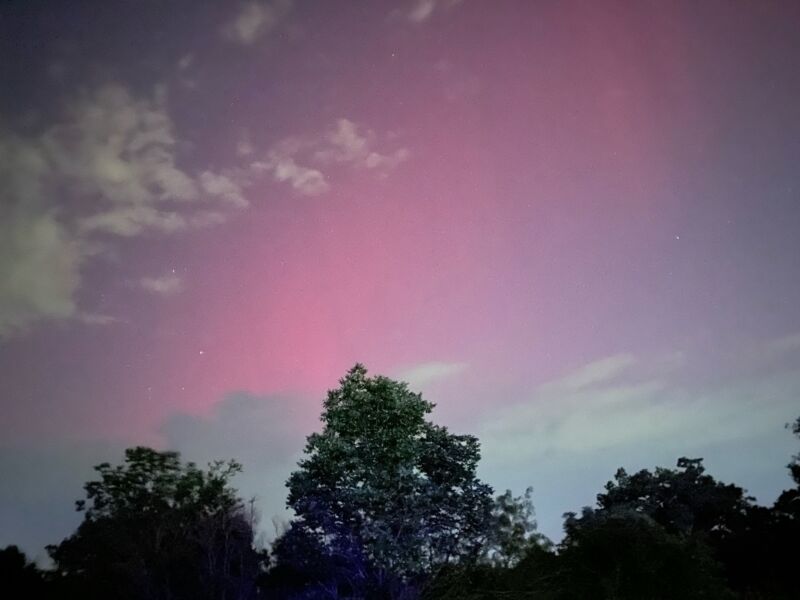So far disruptions from the geomagnetic storm appear to be manageable.

After a night of stunning auroras across much of the United States and Europe on Friday, a severe geomagnetic storm is likely to continue through at least Sunday, forecasters said.
The Space Weather Prediction Center at the US-based National Oceanic and Atmospheric Prediction Center observed that ‘Extreme’ G5 conditions were ongoing as of Saturday morning due to heightened Solar activity.
“The threat of additional strong flares and CMEs (coronal mass ejections) will remain until the large and magnetically complex sunspot cluster rotates out of view over the next several days,” the agency posted in an update on the social media site X on Saturday morning.
Good and bad effects
For many observers on Friday night the heightened Solar activity was welcomed. Large areas of the United States, Europe, and other locations unaccustomed to displays of the aurora borealis saw vivid lights as energetically charged particles from the Solar storm passed through the Earth’s atmosphere. Brilliantly pink skies were observed as far south as Texas. Given the forecast for ongoing Solar activity, another night of extended northern lights is possible again on Saturday.
There were also some harmful effects. According to NOAA, there have been some irregularities in power grid transmissions, and degraded satellite communications and GPS services. Users of SpaceX’s Starlink satellite internet constellation have reported slower download speeds. Early on Saturday morning, SpaceX founder Elon Musk said the company’s Starlink satellites were “under a lot of pressure, but holding up so far.”Advertisement
This is the most intense Solar storm recorded in more than two decades. The last G5 event—the most extreme category of such storms—occurred in October 2003 when there were electricity issues reported in Sweden and South Africa.
Should this storm intensify over the next day or two, scientists say the major risks include more widespread power blackouts, disabled satellites, and long-term damage of GPS networks.
Cause of these storms
Such storms are triggered when the Sun ejects a significant amount of its magnetic field and plasma into the Solar wind. The underlying causes of these coronal mass ejections, deeper in the Sun, are not fully understood. But it is hoped that data collected by NASA’s Parker Solar Probe and other observations will help scientists better understand and predict such phenomena.
When these coronal mass ejections reach Earth’s magnetic field they change it, and can introduce significant currents into electricity lines and transformers, leading to damages or outages.
The most intense geomagnetic storm occurred in 1859, during the so-called Carrington Event. This produced auroral lights around the world, and caused fires in multiple telegraph stations—at the time there were 125,000 miles of telegraph lines in the world.
According to one research paper on the Carrington Event, “At its height, the aurora was described as a blood or deep crimson red that was so bright that one ‘could read a newspaper by’.”




